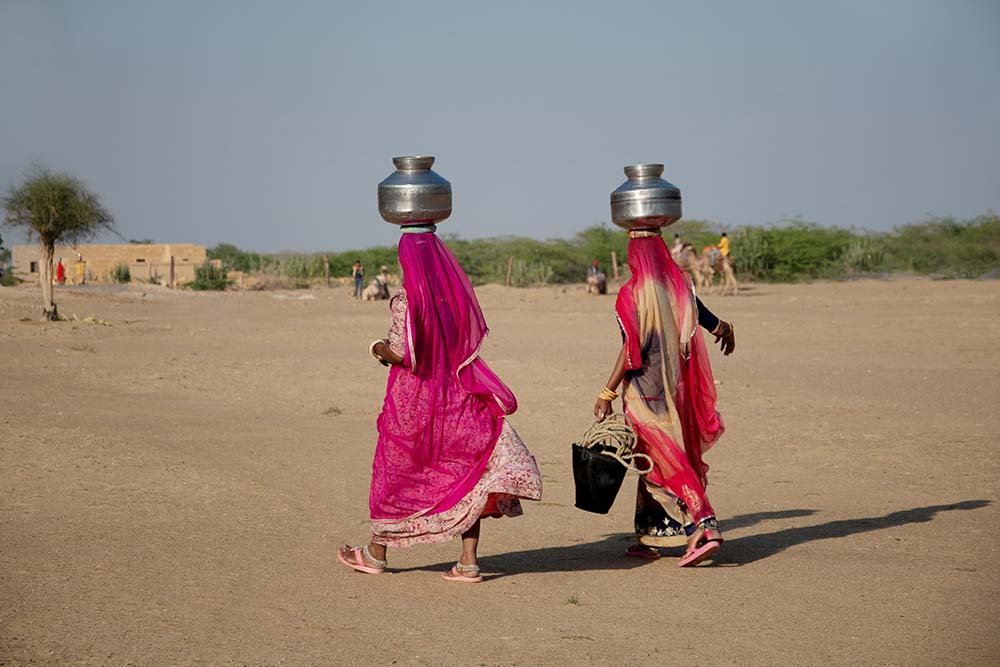Is there a correlation between the climate crisis and gender equity? It may seem unlikely, but over time, data and research have revealed that there is a definite link. Women in rural areas in India, as well as those in developing countries across the world, are disproportionately affected by climate change. Along with the environment, the economic and social development of these women are also negatively impacted.
Landslides, droughts, floods, earthquakes, and storms are some natural calamities that affect all marginalised communities. But one has to take Intersectional Feminism into account to talk about how some segments are more vulnerable than others because they are at the receiving end of gender, race, social and economic inequalities. A term coined by American Law Professor Kimberle Crenshaw in 1989, she explains that ‘all inequality is not created equal’ and intersectional feminism is 'a prism for seeing the way in which various forms of inequality often operate together and exacerbate each other’. In an interview with TIME magazine, she said, “We tend to talk about race inequality as separate from inequality based on gender, class, sexuality, or immigrant status. What’s often missing is how some people are subject to all of these, and the experience is not just the sum of its parts.”
Lack of clean water for sanitation
“During the Assam Floods, we were constantly working on rehabilitating women who could find dry land to ease themselves or even to walk to toilets,” says women’s rights activist, Satya Hariharan. “Disasters mean displacement for these women, and lack of access to toilets or sanitised water to clean themselves result in major health issues like UTIs and constipation. The little clean water that they manage to catch, they would have to keep for consumption. During their menstrual cycles, things are even worse, especially with those who cannot afford disposable pads or find enough suitable water to wash their cloth napkins.
“Not just women, even young adolescent girls face these challenges and are often ill-equipped to manage them physically and emotionally. For those who are pregnant, safety is a major concern for both mother and foetus. Sometimes, when the floods are devastating, many women don’t even know how to swim, leaving their lives vulnerable. They’re also less likely to receive immediate relief and assistance, which could impact their recovery and health.”

Lack Of food security
Last year, Behanbox, a digital media platform focused on women, reported that women working in tea plantations in Darjeeling suffer from health issues because of exposure to pesticides and fertilisers that are being increasingly used to combat climate change and optimise yield. In India, the agricultural sector is run by 80 per cent of rural women, as per statistics by the NITI Ayog, the government’s think tank. Many of them are not given protective gear to work, and end up with skin ailments, high blood pressure, digestive problems and even cancer.
Their cup of woes doesn’t end with health problems. During times of natural calamities, drought, erratic rainfall and so on, agricultural yield is poor, so they have to work doubly hard to secure a living for their family. Not only does this account for loss of income, but also a lack of food security. Food security involves availability, accessibility, utilisation and stability. When there is a scarcity of harvests, food prices increase and the entire community of agrarian women have to work harder to recover from the setback.
Erratic safety and health
“Women are prone to injuries and physical setbacks because of the labour involved – big loads, long walks, against very little nutrition,” says Jayanti K Sharma, a volunteer with WHO. “Also, these women are easy prey for sexual harassment and there have been many cases of rape, unwanted pregnancies and even loss of life. These secondary impacts of climate change are often not considered. Even when water for bathing or drinking is available, contamination of ground water is fairly common now, resulting in several ailments. Women face the fallout of water-borne diseases, as well as mosquito-borne ones such as malaria, dengue and, more peculiar to women and their unborn children, the Zika virus.
Prioritisation of boys and men
Whenever families are displaced and lose their livelihood, one of the first things to be impacted is the education, nutritional needs, and healthcare of girls and women in that family. Instead, men and boys in the family are prioritised. The added burden or care and rehabilitation also devolves upon women and girls, leaving them more vulnerable.
Use Of natural resources
Women in rural areas are often dependent on natural resources for their work and livelihood. They are entrusted with responsibilities such as water collection, firewood collection for heating, fuel collection for cooking, acquiring produce to prepare food and so on. Data from the India Human Development Survey-2 (IHDS), a national-level household survey on multiple development parameters, shows that women spend twice the amount of time (46 minutes) fetching water per day as compared to men (22 minutes). They often have to walk long distances and do hard, laborious work to meet these needs. And while they are the essential givers, they themselves have extremely unequal access to these limited resources. During climate change and in a disaster, this inequality becomes even more evident.
The irony here is that women, especially those from indigenous tribes, know how to harness natural resources effectively – not just across their own family, but also across larger communities, as well. Apart from this, their knowledge and skills can be used to mitigate the effects of climate change and enhance adaptation strategies. However, they do not believe that they have the power to be decision-makers due to generations of patriarchal conditioning. Also, women in these areas are largely ‘invisible’, and their opinions and needs are often dismissed. These lead to an absolute lack of tapping into their expertise and knowledge. Imagine the positive impact it could make to have their input!